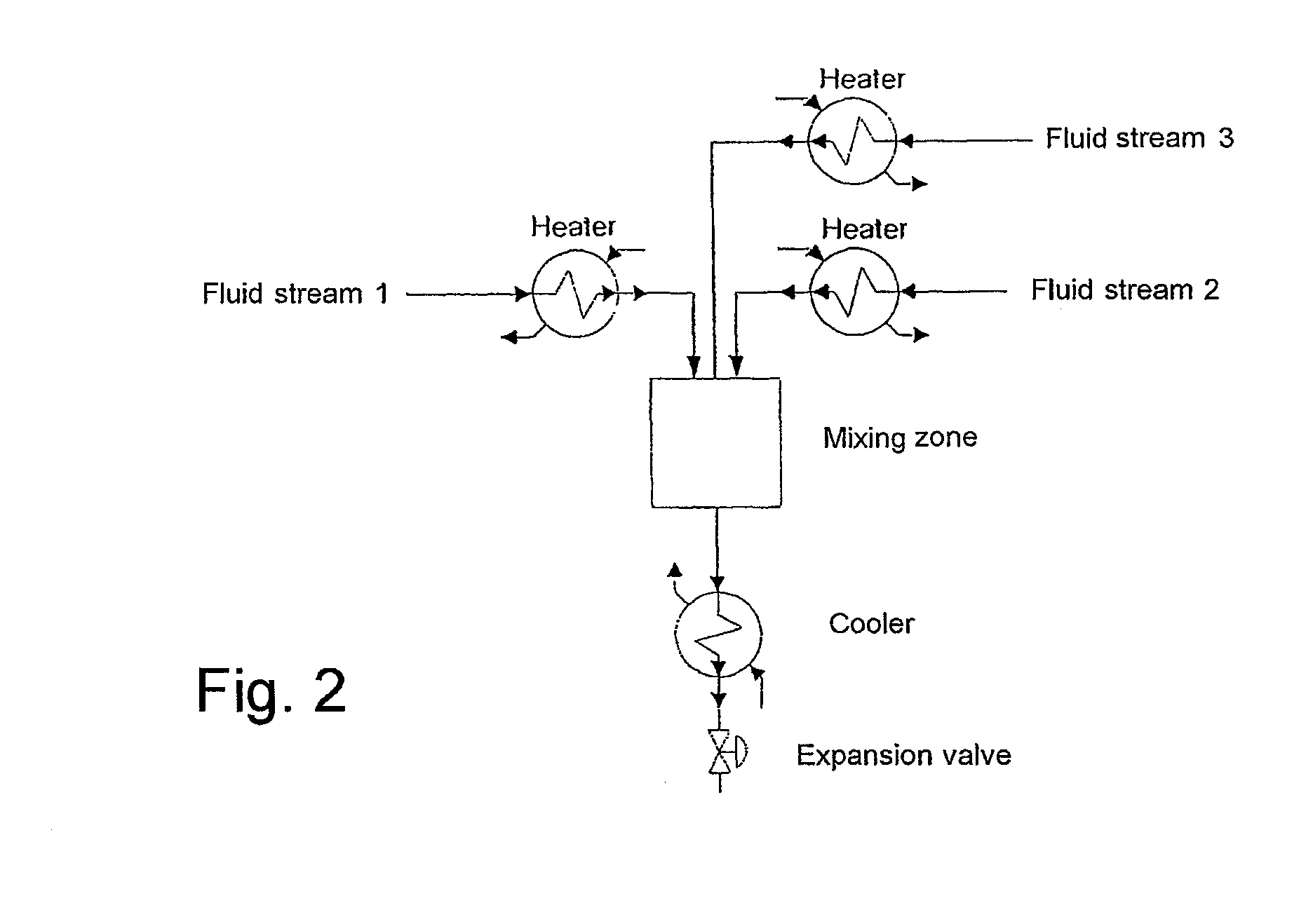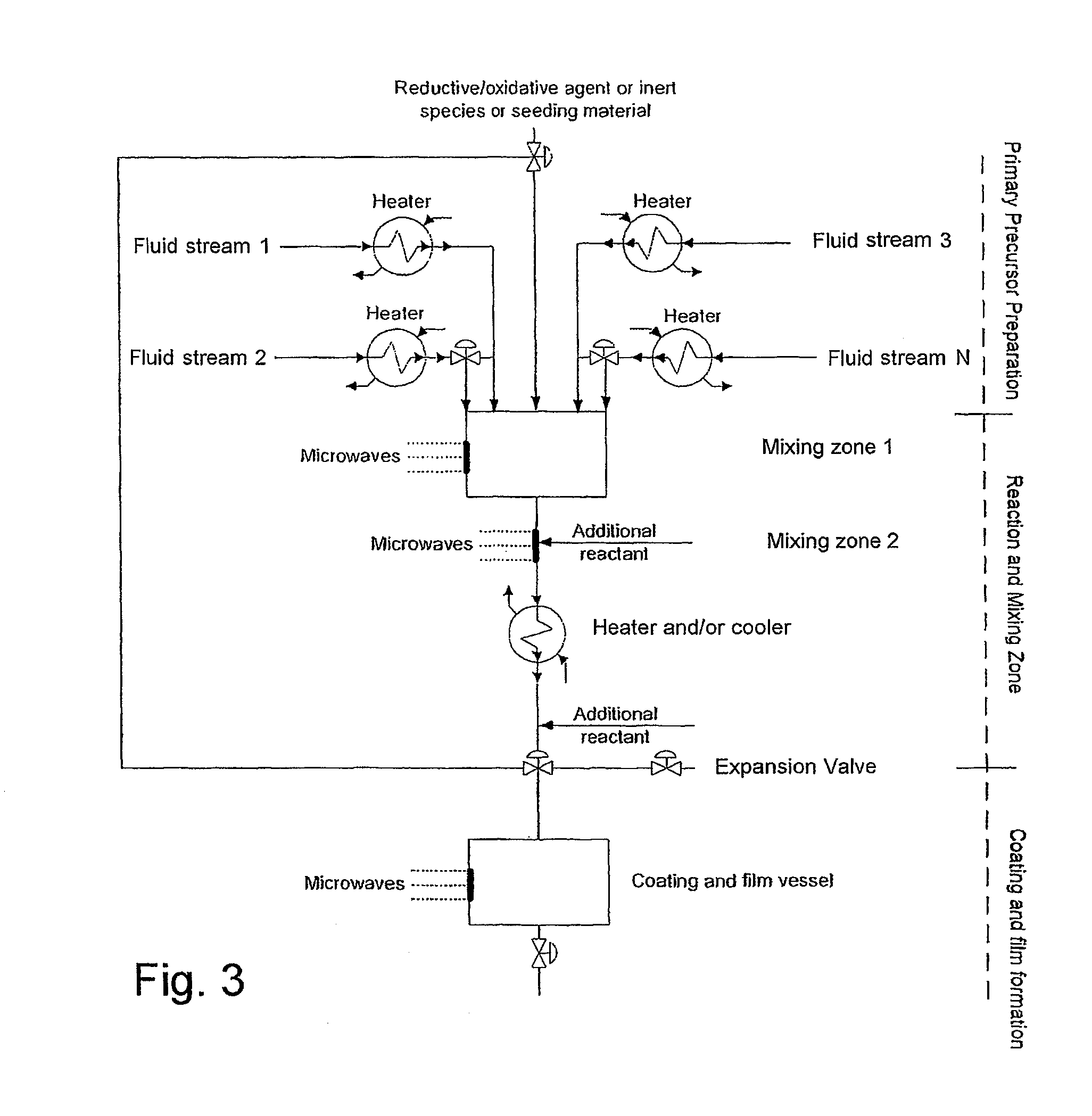Production of nanosized materials
a nano-sized material and nano-sized technology, applied in the field of nano-sized materials, can solve the problems of time-consuming, needing after treatment, and specific surface area may be reduced by up to 80%, and achieve the effects of small average diameter, controlled particle morphology, and high purity
- Summary
- Abstract
- Description
- Claims
- Application Information
AI Technical Summary
Benefits of technology
Problems solved by technology
Method used
Image
Examples
example 1
ILLUSTRATIVE EXAMPLE 1
Production of TiO2 with a Mixture of Crystal Phases
[0107]Nano sized materials comprising mixed crystal phases are important for many practical applications. According to an aspect of the present invention such mixed crystal phases may be produced from a precursor mixture comprising two or more metal alkoxides, metal nitrides, metal sulphates or metal salts, so as to obtain different crystal phases in the same metal oxide product. Different crystal phases may be synthesized from certain metal precursors. For example using a mixture of titanium isopropoxide and amino titanium oxalate leads to a mixture of anatase and rutile, whereas, amino titanium oxalate may used for synthesizing rutile at low temperatures.
example 2
ILLUSTRATIVE EXAMPLE 2
Stabilized and or Doped Metal Oxides
[0108]Doped metal oxides and / or stabilized metal oxides are important for many technical applications, e.g. photocatalysis or solid oxide fuel cells. Such doped or stabilized metal oxides may according to the present invention be produced by introducing precursors for said doping metal in fluid 2 or in a separate reactant stream, Reactant stream 3.
example 3
ILLUSTRATIVE EXAMPLE 3
PZT Coating—Three Steps Mixing
[0109]PZT (Pb(ZrxTi1-x)O3) coatings may be produced according to the present invention through a three steps mixing process as shown in FIG. 4. Reactant stream 1 may be a titania precursor for example titanium isopropoxide preheated before entering the mixing point 1. Reactant stream 2 may be a zirconia precursor for example zirconium n-propoxide preheated before entering mixing point. Reactant stream 1 and reactant stream 2 may according to another aspect of the present invention also be mixed prior to entering mixing point 1. One or more chelating ligands or / and stabilizing agents or / and catalysts may also be introduced in mixing point 1 to stabilize the sol / -s. Reactant stream 3 could be a lead precursor such as lead acetate preheated before entering mixing point 2. Reactant stream 1-3 may comprise the same solvent or one or more streams may comprise / -s a different solvent / -s. After mixing point two a stable sol may be created a...
PUM
| Property | Measurement | Unit |
|---|---|---|
| temperature | aaaaa | aaaaa |
| zeta potential | aaaaa | aaaaa |
| pressure | aaaaa | aaaaa |
Abstract
Description
Claims
Application Information
 Login to View More
Login to View More - R&D
- Intellectual Property
- Life Sciences
- Materials
- Tech Scout
- Unparalleled Data Quality
- Higher Quality Content
- 60% Fewer Hallucinations
Browse by: Latest US Patents, China's latest patents, Technical Efficacy Thesaurus, Application Domain, Technology Topic, Popular Technical Reports.
© 2025 PatSnap. All rights reserved.Legal|Privacy policy|Modern Slavery Act Transparency Statement|Sitemap|About US| Contact US: help@patsnap.com



